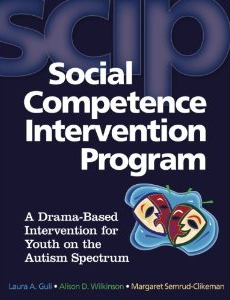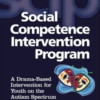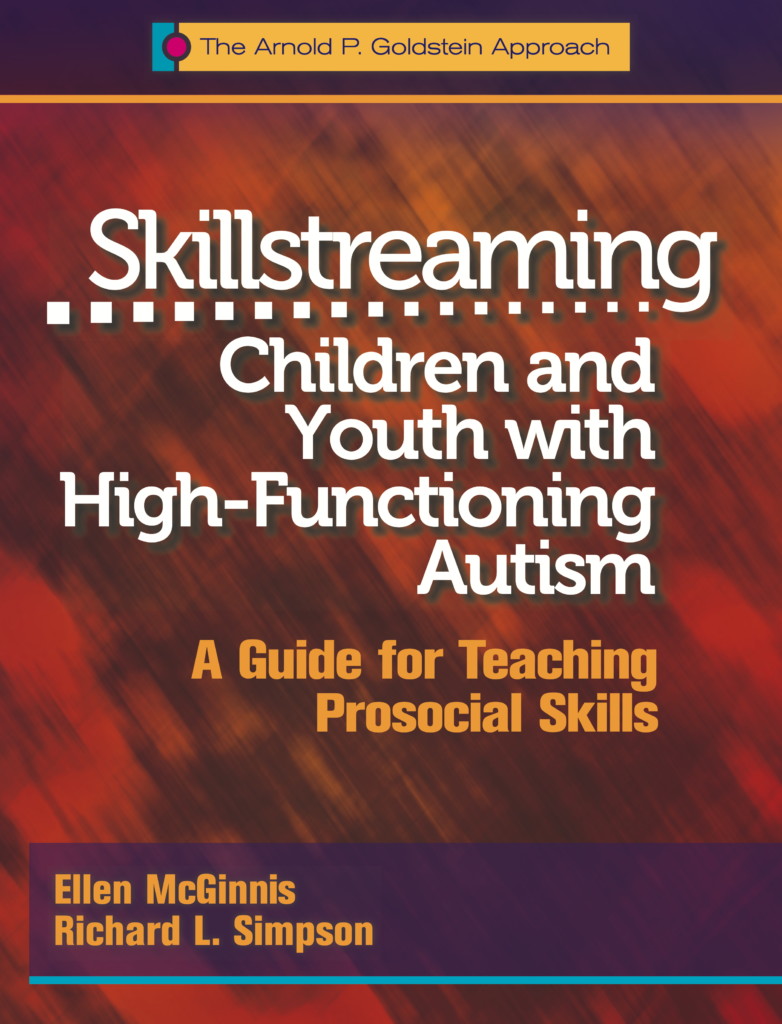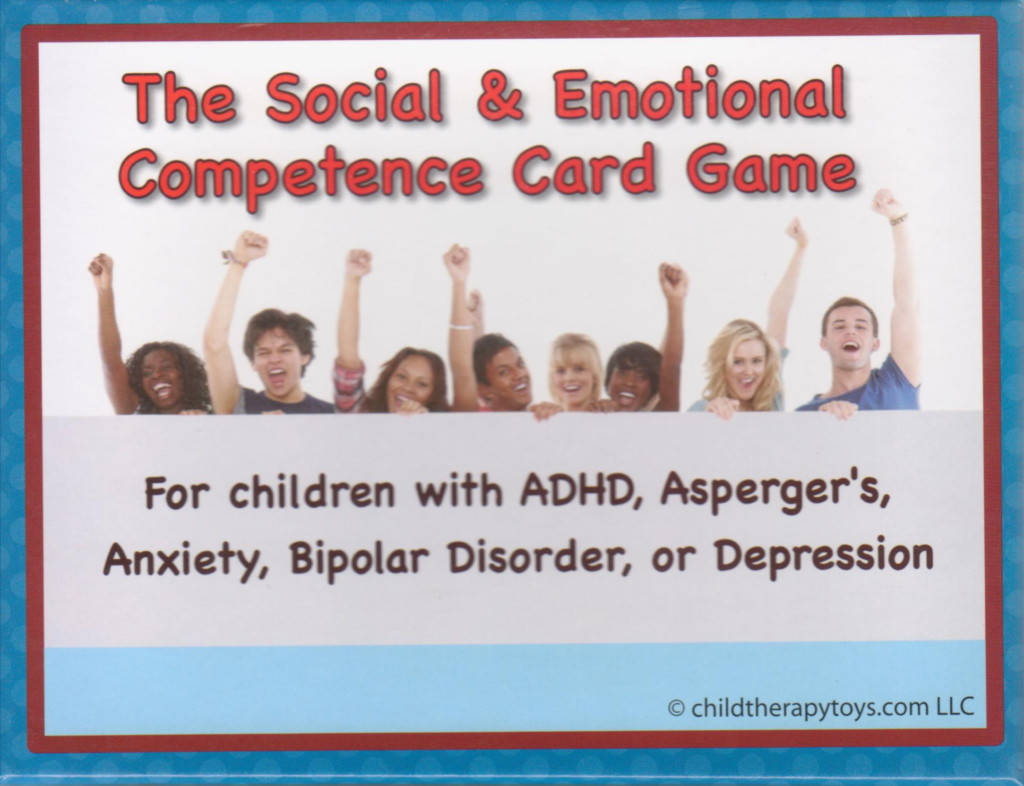SCIP is a 16-session, drama-based intervention for youth ages 8-14 on the autism spectrum. The authors blend current research from neuropsychology and information from the field of creative drama to help students accurately perceive and respond to nonverbal aspects of social interactions, such as facial expressions, body language, and tone of voice.
Program sessions are divided into three parts: input, integration, and output.
- Input—the basic perception of social cues.
- Integration—how to put social cues together.
- Output—how to respond appropriately to others.
Students are asked to participate in process dramas and take on roles that explore various outcomes. During role plays, students learn to divide complex social interactions into sequential parts, discuss the emotions involved, and act out a variety of possible responses. They also learn practical skills for dealing with teasing and understanding complex social cues.
An accompanying CD of all the reproducible forms and student handouts is included with the book.
Book Reviews
“While this book is geared primarily for students with autism spectrum and related disorders, it can be used for any student who has difficulties with social cognition. . . . lesson plans are detailed and easy to use. . . . The general topics covered are facial expressions and body language, vocal cues, different points of view, matching cues, fluency in conversation, understanding interactions, and dealing with teasing. Halfway through the program, participants engage in a process drama, where a situation is presented, and roles are assigned and cues are given to the students.”
—Lynn Merlone, New Hampshire School Counselor Newsletter
“There is much to recommend in this manual. The authors’ understanding of purposeful use of activity is clear in the choice and structure of activities offered through the program’s progressions. A number of activities may be familiar to group workers who are skilled in using drama-based activities. Nonetheless, in its stage appropriate manner, the manual offers a comprehensive building block of creative activities to refer to over and over again. For those working with the specific population of youth on the autism spectrum, the manual offers a concrete, inventive, and supportive way to use dramatic activity to address members’ challenges with development of social competence.”
—Mary C. Bitel, Social Work with Groups
“Overall, initial results for SCIP appear to be promising. As the authors continually point out, flexibility with implementing the program is a key to success. Group leaders are encouraged to model how to adapt to the unexpected. Doing so can lend a dynamic element to the group discussions that make up every session. . . . The curriculum manual offers enough original material for the program to run longer that the proposed 16 sessions. Given the benefits of additional practice in a controlled setting, program leaders can easily extend their program with little effort.”
—Alessandra Giampaolo, Youth Today





